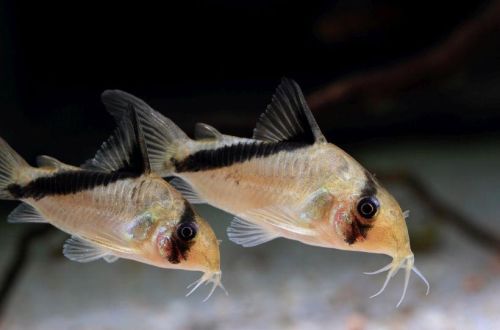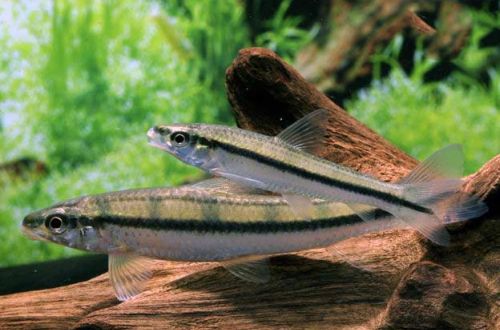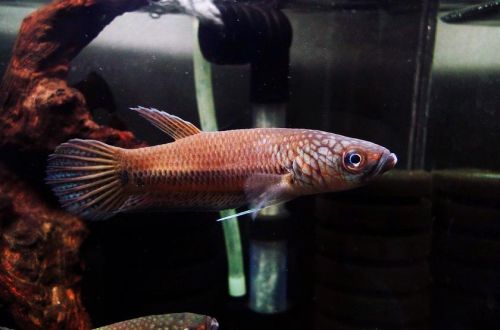
Corridoras Melina
Corydoras Melina, the scientific name of Corydoras melini, belongs to the family Callichthyidae (Shelled or callicht catfishes). The fish is named after the Swedish biologist Douglas Melin, who first discovered and described this species of catfish. Originally from South America from the territory of the Brazilian state of Amazonas and the eastern regions of Colombia. Inhabits the Guavire (Orinoco tributary) and Caqueta (Amazon tributary) river basins. It is found in untouched streams and rivers flowing through dense rainforest. The bed is covered with a layer of fallen leaves, branches and other snags. The water has a rich brown color due to the high concentration of tannins released during the decomposition of plant organic matter.

Contents
Description
It is a close relative of such catfish as Corydoras Adolf, Corydoras Burgess, Corydoras imitator, Corydoras Sands and others. In its coloration and body pattern, there are common features with them in the form of black stripes running along the back and head. The color is light, white or silver.
There are two natural varieties of Corydoras Melina, noted in the scientific literature under the indices “C084”, “C085”. The differences are minimal and only relevant to biologists. Therefore, if one of these indices is present next to the name of the species when buying, then an ordinary aquarist can ignore them.
Brief information:
- The volume of the aquarium – from 70 liters.
- Temperature – 20-26°C
- Value pH — 4.0–7.0
- Water hardness – very soft (1-5 dGH)
- Substrate type – sandy
- Lighting – subdued or moderate
- Brackish water – no
- Water movement – light or moderate
- The size of the fish is 4–5 cm.
- Nutrition – any drowning
- Temperament – peaceful
- Keeping in a small group of 4-6 individuals
Maintenance and care
It is considered an unpretentious fish, quite affordable even for beginners in the aquarist. It is important to observe only a few conditions in order to create a favorable environment for catfish – a spacious tank from 70 liters for 4-6 individuals, low pH and dGH values, soft sandy or fine gravel soil, the presence of shelters at the bottom. Maintaining a healthy aquarium ecosystem will depend on the smooth operation of equipment, primarily the filtration system, weekly replacement of part of the water with fresh water with the same hydrochemical values, regular removal of organic waste, etc.
Experienced aquarists add leaves of some trees to the bottom. In the process of decomposition, they begin to release tannins, giving the water a chemical composition similar to that in which fish live in nature. Read more in the article “Which tree leaves can be used in an aquarium.”
Food. They accept most popular feeds in dry, frozen and live form. A varied diet consisting of a variety of foods is encouraged. It is advisable to use sinking feed.
behavior and compatibility. Peaceful friendly fish. Prefers to be in a group of relatives, so it is worth buying a flock of 4-6 individuals. Usually, different types of corridors keep separately, but closely related species often form mixed groups. Compatible with many non-aggressive fish of comparable size.





